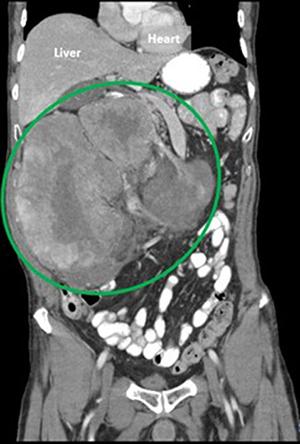Retroperitoneal Sarcoma Tests
How Is Retroperitoneal Sarcoma Diagnosed?

Occasionally, retroperitoneal sarcoma can cause symptoms when the tumor is compressing or involving a nerve or blood vessel. In most cases, however, retroperitoneal sarcoma presents subtly and without any alarming symptoms. For example, a patient may feel an asymmetric abdominal fullness or have only vague discomfort. Sometimes retroperitoneal sarcoma is asymptomatic and detected incidentally on X-rays done for a different purpose.
Before treatment, a patient should have a computed tomography scan of the abdomen and pelvis with contrast. Sometimes, a chest CT or a whole body PET scan is recommended to learn more about the tumor and whether it has spread to other organs.
To accurately diagnose retroperitoneal sarcoma, a core needle biopsy is performed to obtain tumor tissue. This is an outpatient procedure done by a radiologist guided by a CT scan. The sampled tissue is then examined by a pathologist under the microscope. It is crucial to confirm sarcoma and identify the specific type of sarcoma (e.g., liposarcoma). The risk of spreading a tumor with a needle biopsy is exceedingly low and almost non-existent with modern techniques. Open surgical biopsies are discouraged.
There are currently no blood tests that can indicate that a patient has retroperitoneal sarcoma.